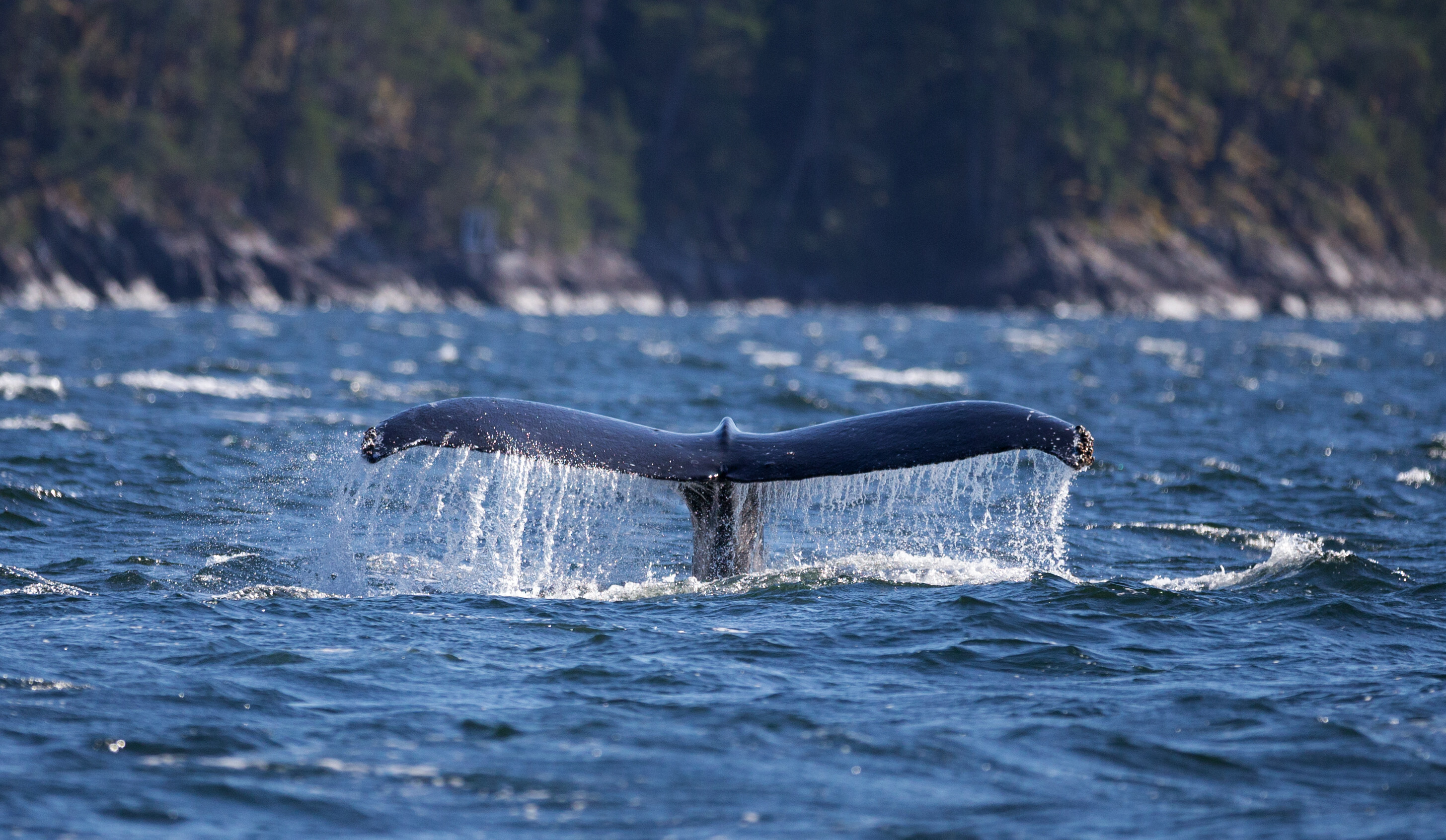
- Humpback whales are making a comeback to the Salish Sea off Vancouver in western Canada, helping the region’s wider natural and cultural revitalisation
In the frigid waters of Canada’s Salish Sea, close to the mouth of Bute Inlet, a female humpback whale and her calf point their knobbly flippers skyward in perfect synchronicity, before slowly sliding below the surface.
Closer to the shoreline another humpback exhales air and slaps the water with its huge tail flukes, sending a plume of spray high into the air. Here, in the coastal waters off British Columbia, a long summer of undisturbed feeding means these iconic cetaceans have more than enough energy to put on a captivating show.
Bradden Kiley, a tour guide with Campbell River Whale Watching and Adventure Tours, waits for the mother and calf to dive before heading the Zodiac inflatable for home, its passengers thrilled with the day’s close encounters. Humpbacks are a favourite of whale watchers and sightings in the area have never been so good.
“I’ve never seen as many humpbacks as I have in 2021,” says Kiley, an Australian. “A few years ago you’d be lucky to see one on a tour, so it’s a great sign to see them returning. The so-called humpback comeback currently taking place in the Salish Sea is good for business, of course. But more than that, it’s a sign that the entire marine ecosystem here is more in balance. These mammals are a critical part of the food chain.”
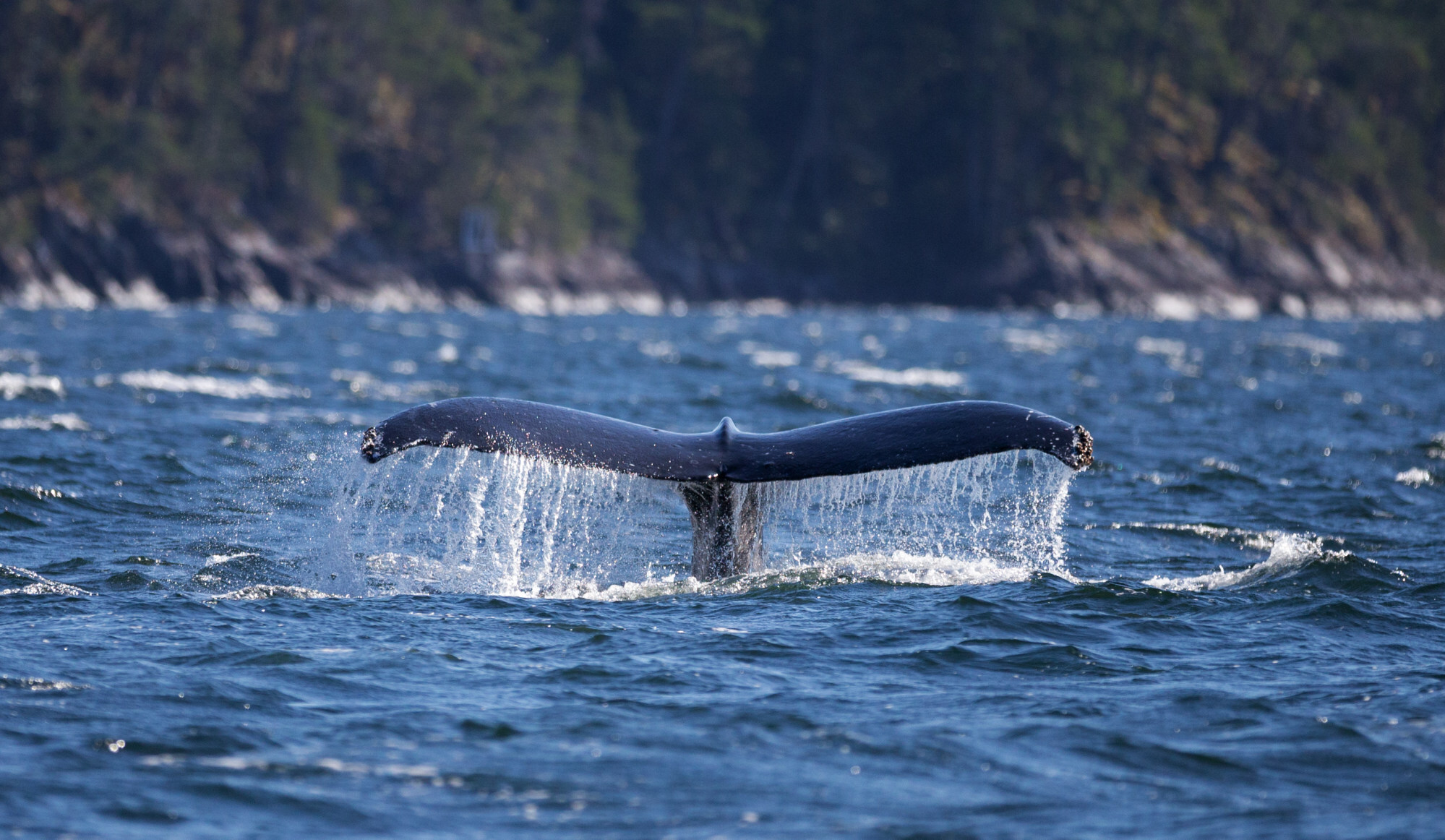
Although millions of people live beside it, the Salish Sea remains a relatively unknown entity. Stretching from the city of Olympia, in the American state of Washington, in the south, to Campbell River, in the Canadian province of British Columbia, in the north, it is an area of spectacular natural beauty and biologically diverse marine waters, and has a rich cultural history.
The sea’s name refers to the Coast Salish indigenous peoples (First Nations), who have lived in the area for thousands of years and share a common linguistic and cultural origin.
A defining feature of the Salish Sea, which is bounded by Vancouver Island to the west, is the interaction between salt water from the Pacific Ocean and fresh water from rivers that empty into it from surrounding watersheds.
This fertile feeding ground traditionally supported large numbers of humpback whales, which appeared in the Salish Sea in late spring after calving in southern waters, feasted on fish and krill over the summer, and then headed south again in the autumn.
While the First Nations hunted whales in the Salish Sea for food and other resources for thousands of years, the harvesting was carried out at a sustainable rate using traditional methods. But then came commercial whaling with steam-powered ships and exploding harpoons. By the early 1900s, the humpback whales of the Salish Sea had been wiped out.
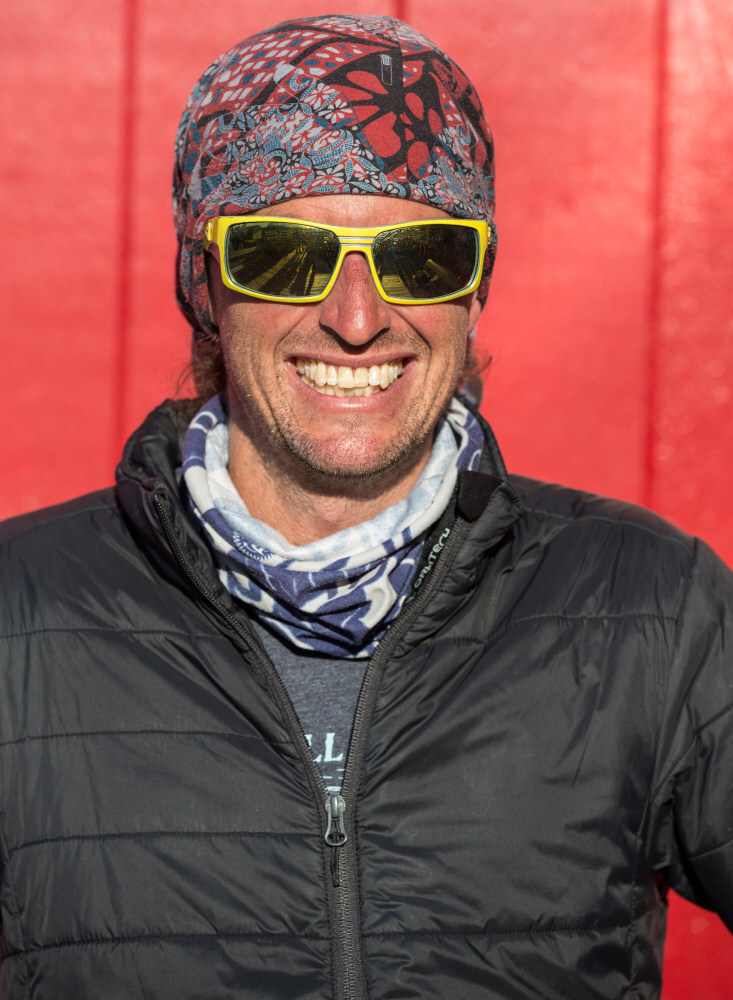
Whaling continued on the outer coast for many more decades, and it was not until 1966 that the International Whaling Commission banned the commercial hunting of humpbacks.
“Once hunting stopped, the numbers slowly began to increase from potentially as few as 1,000 animals in the north Pacific to today’s current population, which is more than 20,000,” says Erin Gless, executive director of the Pacific Whale Watch Association.
“A new generation of humpback whales began to branch out looking for new feeding grounds and came across the rich waters of the Salish Sea once again.”
Starting with the odd appearance in the 1980s and 90s, sightings of humpbacks in the Salish Sea steadily rose throughout the early 2000s. But it is over the past five years that the population has really taken off. In 2021, a record 21 humpback calves were spotted in the Salish over the summer feeding season.
“There are now more than 500 whales in the Humpback Whales of the Salish Sea catalogue,” says Gless. “The main driver is simply the removal of whaling pressure on the population.”
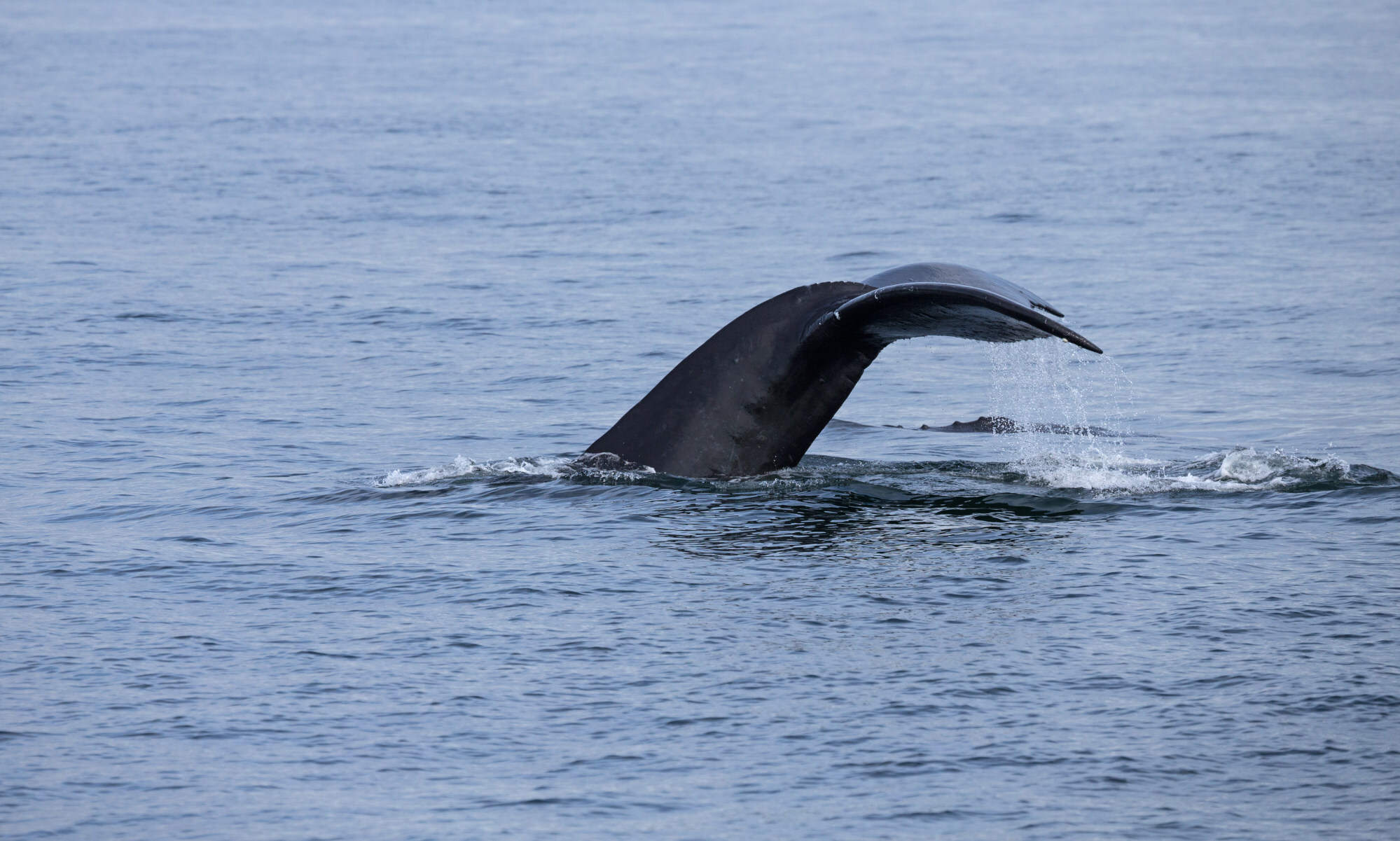
Navigating the choppy waters between Quadra and Read islands, Kiley slows the Zodiac and arcs towards a low, rocky shoreline. Delicate, whiskered faces of female Steller sea lions begin to pop up beside the boat, liquid eyes focused intently on the intruder in their midst.
In the shallows, a huge male is throwing his impressive bulk around, flexing his neck backward and barking as he scatters more of his harem into the water. The air is filled with an overpowering fishy tang.
Humpback whales are not the only marine mammals thriving in the Salish Sea. Seals and sea lions are also making a recovery all along the west coast of Canada.
Populations of these charismatic animals were severely depleted by hunting and intentional killing well into the 1960s, when they were at a fraction of their historic abundance. But thanks to the passing of several federal laws, they are now returning.
“Stellers are the world’s largest species of sea lion, with big males tipping the scales at over 1,000kg,” says Kiley. “Early observers called them sea lions because the males grow large, furry manes, but when you compare these top marine predators to land animals, I like to think of them as the grizzly bears of the sea.”
Unsustainable exploitation of the land and its wildlife … is alien to our way of life. To see the humpback whales returning is hugely pleasingDarren Blaney, chief of the Homalco First Nation
The emerald waters of Bute Inlet are the deepest in the Salish, surrounded by rugged coastal peaks that soar to heights of nearly 3,000 metres. Beginning northeast of Campbell River, this spectacular fjord snakes its way inland, to where the Homathko and Southgate rivers run down from glaciers and ice fields high up in the mountains.
This is the traditional home of the Homalco band of the Coast Salish people.
Like many wildlife-watching tour outfits in the northern Salish Sea, Homalco Wildlife and Cultural Tours is based in Campbell River, on Vancouver Island. The company is owned by the Homalco First Nation, who consider themselves stewards of Bute Inlet’s grizzly bear population, and its tours – which combine whale and bear watching with cultural immersion – are increasingly popular.
“The coast of British Columbia, including the Salish Sea, is a land of abundance,” says Darren Blaney, chief of the Homalco First Nation. “It was managed and maintained by the First Nations people for thousands of years.
“We have always had a deep connection with the landscape and its wildlife, with our oral histories highlighting the importance of certain animals and elements of nature, such as the cedar and salmon.”

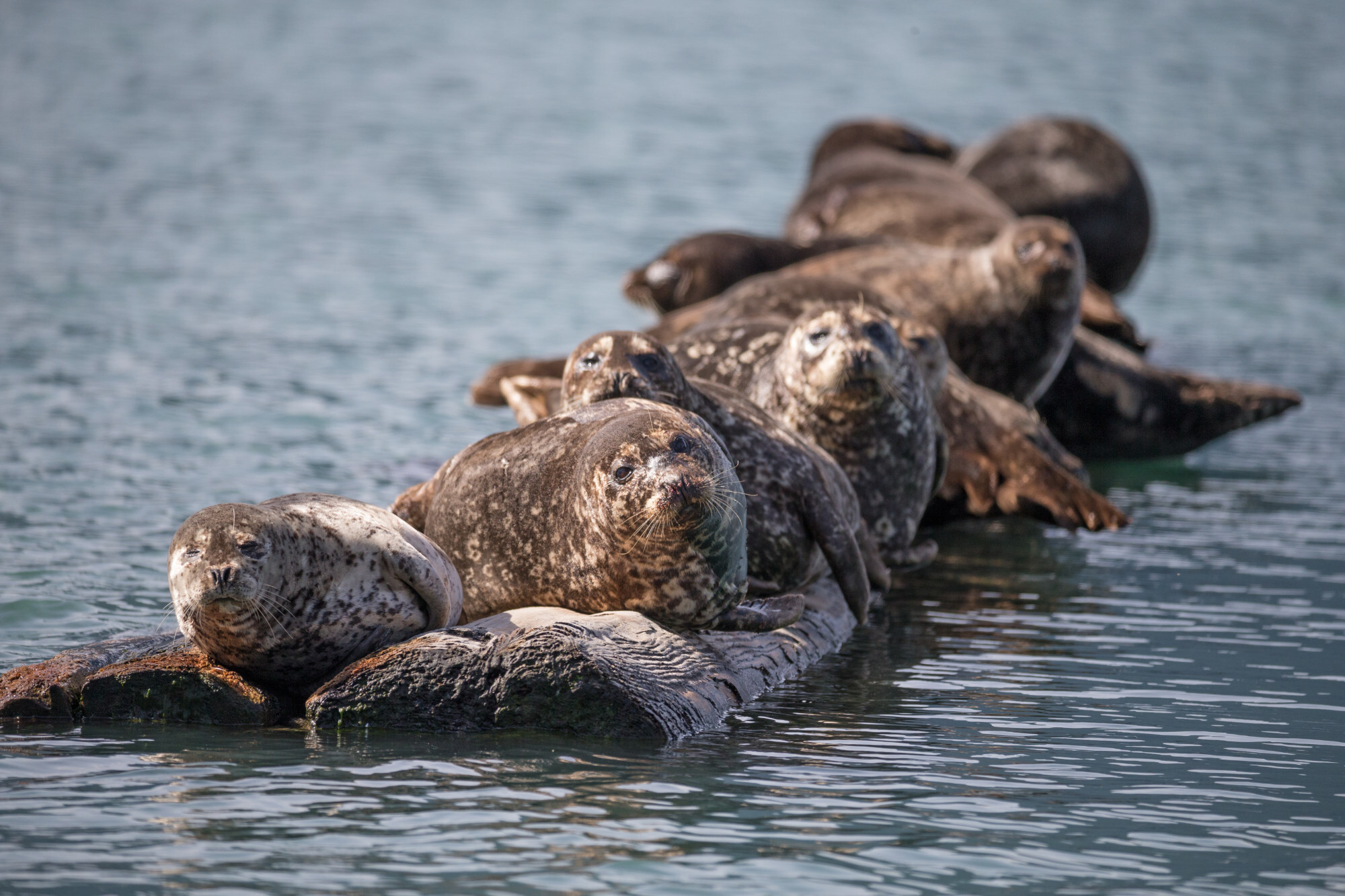
“Unsustainable exploitation of the land and its wildlife – such as the commercial hunting of whales – is alien to our way of life. To see the humpback whales returning is hugely pleasing, because everything in nature is interconnected,” Blaney adds.
Like other Coastal Salish peoples, the Homalco thrived on the bounty of the ocean. Blaney has long campaigned for the removal of fish farms from Homalco territory, which are blamed for the serious decline of wild salmon stocks in the area.
At the same time, the Homalco have been working hard to boost wild salmon stocks with their own hatchery.
“By enhancing wild salmon stocks, more grizzly bears have returned to the area,” the chief says. “This has allowed us to develop our wildlife and cultural tours of the area. A portion of the proceeds from these tours is then reinvested in the hatchery.”
Asta Mail is education coordinator for the Raincoast Conservation Foundation, a Canadian NGO working to protect the lands, waters and wildlife of coastal British Columbia. She runs the foundation’s Salish Sea Emerging Stewards programme, which delivers hands-on education to underserved and indigenous youth to help them connect with nature in their own traditional territories.
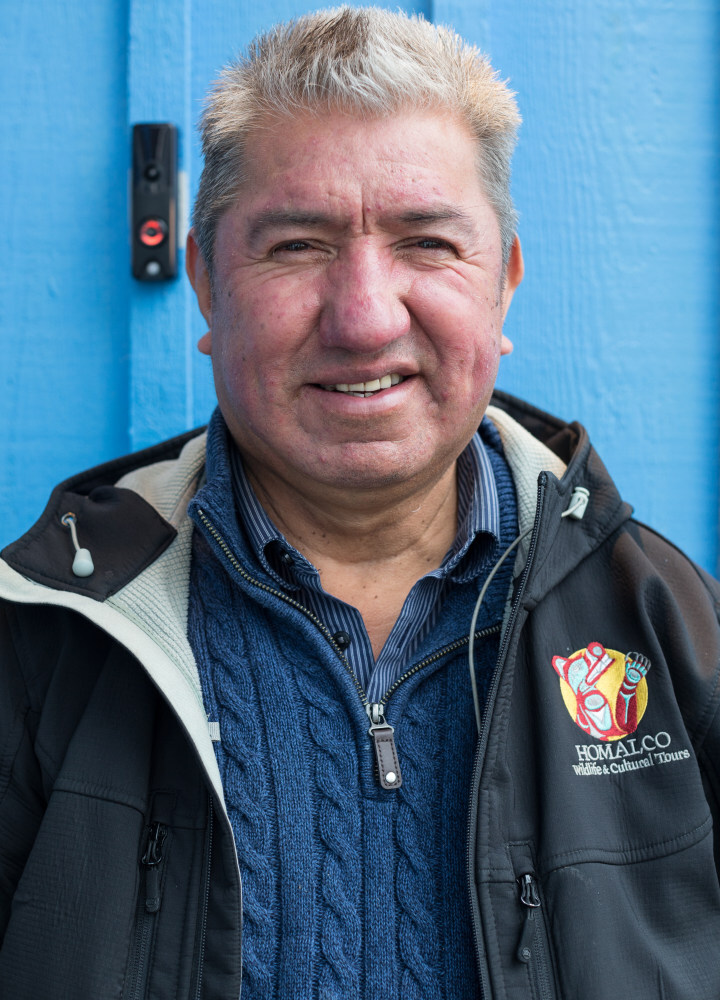
“All of the Coast Salish people I have worked with have a profound connection with their environment. This lack of separation from the natural world makes the degradation of the Salish Sea environment, which is exemplified by the overexploitation of humpback whales, that much more personal and troubling.
“But it is also why so many young First Nations people are stepping up to create change and begin careers in environmental restoration, protection and advocacy,” Mail says.
The resurfacing of humpback whales in big numbers in the Salish Sea is good news for people and nature, but that does not mean that all is well in the Salish’s marine ecosystem. The area’s resident killer whales (orcas) – also a favourite of whale watchers – are endangered by declining wild salmon stocks, while the sea’s resurgent humpback whale population is still exposed to threats from human activity.
“The increased occurrence of humpbacks in the Salish Sea means the danger from commercial ship strikes and entanglement in fishing gear has also increased,” says John Calambokidis, research biologist at the Olympia-based non-profit organisation Cascadia Research Collective, who has been studying humpback whales in the region for more than three decades.
Despite the existential dangers they still face, however, the humpback whales of the Salish Sea are showing the resilience of nature.
“As more people learn about the humpbacks of the Salish Sea and come here to see them, so the value of each whale increases,” says Kiley. “But you can’t put a price on their head. It’s just beautiful that these animals are out there once again. For that reason alone we need to ensure the comeback continues.”

